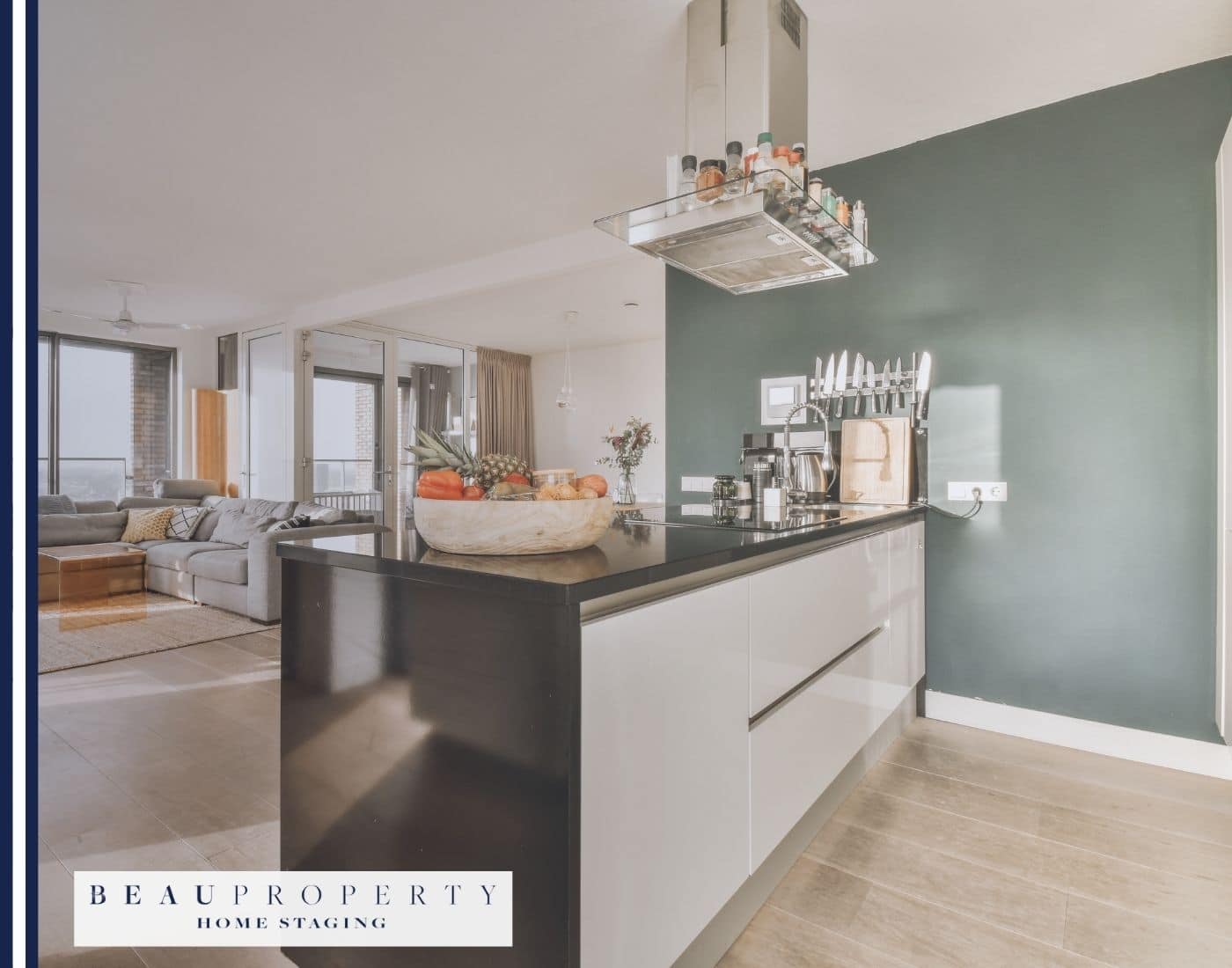Understanding the 2025 UK Property Market
Current Market Trends
The UK property market in 2025 is experiencing renewed growth, reversing declines seen in recent years. Average house prices rose by 6.4% in the 12 months to March 2025, reaching £271,000 according to official estimates, with inflation rising steadily from late 2023’s negative levels. This positive trend is underpinned by sustained demand for larger homes and improved mortgage affordability as lenders introduce lower fixed-rate deals. Many industry experts now forecast annual growth between 2% and 4% for 2025, with some regions even outperforming these figures.
Regional Price Variations
While growth is evident nationwide, regional differences are significant. London’s average price stands at £552,000, showing limited annual growth of 0.8%. In contrast, the North East (£168,000) and North West (£217,000) posted notable increases, up by 14.3% and 9.4% respectively. Wales and Scotland also saw increases of 3.6% and 4.6%. This highlights a north-south divide, with Northern regions outperforming the South in both growth rate and transaction volumes.
Impact of Interest Rates on Buyers
Recent cuts by the Bank of England, with further reductions expected throughout 2025, have prompted mortgage lenders to lower their rates. Two-year and five-year fixed deals are now available as low as 4%, making borrowing more attractive for potential buyers. This downward movement has increased consumer interest, especially among first-time buyers and those looking to upsize. However, overall consumer confidence remains subdued, so buyer behaviour is marked by caution rather than exuberance.
By understanding these trends and regional variations, sellers can better position themselves for a successful move.
Timing Your Sale: Is 2025 the Right Year?
Seasonal Selling Patterns and Market Timing
Traditionally, spring and early summer months in the UK see the highest buyer activity, with properties tending to sell faster and often at stronger prices. In 2025, these trends continue. However, the first quarter may show an unusual surge in transactions as buyers rush to complete sales before the Stamp Duty Land Tax (SDLT) changes in April. After the changes, market activity is predicted to dip temporarily, before stabilising later in the year.
Impact of Stamp Duty Changes
From April 2025, the SDLT threshold for first-time buyer relief drops from £625,000 to £500,000, with an overall increase in rates for additional properties. This creates a clear incentive for both buyers and investors to move swiftly before the deadline to avoid higher tax bills. Sellers considering a 2025 move may benefit from listing before April, when buyer demand could be at its peak.
Regional Market Conditions
Regional differences remain a defining feature of the UK market. The North East and North West have seen the highest annual price rises and increased transactions, showing a leaning toward a seller’s market. London, in contrast, experiences slower growth and softer demand, leading to more of a buyer’s market. Assessing local market data helps determine whether you will face stiff competition or enjoy robust buyer interest.
Thoughtful timing of your sale ensures you maximise both interest and value. Careful preparation for upcoming financial steps makes transitioning to your next home far smoother.
Pre-Sale Financial Preparation
Assessing Your Property’s Market Value
Begin by identifying the true market value of your property based on current 2025 data. Rely on recent local sales, using online property value estimators, or consult a professional appraiser for accuracy. In 2025, house values are predicted to rise at a moderate rate, but outcomes will vary by region. For the most reliable result, combine comparative and intrinsic methods: compare recent sales of similar homes and consider location, size, and property condition to gauge demand and attractiveness.
Understanding Potential Tax Implications
Evaluate the capital gains tax that may arise from your sale. In 2025, favourable long-term capital gains tax rates remain for most sellers, depending on your income band. Make note of deductible costs, too: agent commissions, legal fees, and staging may offset your tax liability.
Budgeting for Your Move and Next Purchase
When preparing your budget, include all costs. Sellers regularly spend 8–12% of their home’s value on agent fees, legal costs, repairs, and moving expenses. A local move in 2024 averages around £2,000 while a long-distance move can exceed £7,600. If you plan to buy another property soon after, keep your proceeds in a high-yield savings account until you’re ready to buy.
Careful planning at this stage can help streamline the rest of your sale journey.
Legal and Administrative Groundwork
Gathering Essential Documents
Before listing your property, it’s important to collect key paperwork to enable a smooth sale. The most essential documents include your original title deed, purchase agreement, and details of any existing mortgage. You’ll also need property tax records, home insurance certificates, and any recent appraisals or surveys. Collate any certificates showing compliance with local codes, such as EPCs (Energy Performance Certificates), which remain a legal requirement. Disclose known issues or alterations via property disclosure forms, and if your home is part of a managed development, have all Homeowners Association documents on hand. These records support transparency and help prevent delays during conveyancing.
Planning Permissions and Building Regulations
Outstanding planning permissions or unresolved building regulations can cause issues. Confirm all permissions for extensions, conversions, or major works are granted and properly documented. If there is unpermitted work, you must disclose it, as non-compliance can reduce buyer confidence and could even affect the sale price.
Understanding Your Mortgage and Early Repayment Charges
Check your current mortgage terms for any early repayment charge (ERC) clauses. ERCs typically range from 1% to 5% of the outstanding balance, depending on how far along you are in your mortgage deal. These charges can significantly impact your net proceeds, so it’s wise to confirm the exact amount with your lender before committing to a sale.
Ensuring your paperwork and permissions are in order from the outset means you can focus on presenting your home in the best light.
Essential Repairs and Maintenance
Identifying and Addressing Structural Issues
Before listing your home, check for any signs of structural issues. Look for cracks in walls, uneven floors, or doors and windows that don’t close properly. If you identify problems, address them early. Unresolved structural faults can deter buyers, delay the sale, or reduce your property’s value at survey stage. A professional inspection can help uncover hidden issues and reassure buyers that your home is a safe investment.
Prioritising Repairs with Maximum Return
Some repairs offer a better return than others. Focus first on those that will visibly increase value or appeal. Good landscaping, such as tidying gardens and planting flowers, can lift kerb appeal and increase overall property value by up to 28%. Inside, replacing tired carpet with wood floors and updating lighting fixtures are affordable changes that attract buyers. For smaller budgets, deep cleaning, fixing doors and windows, or painting walls in light, neutral colours will refresh the space.
Handling Minor Maintenance
Handle minor issues such as loose handles, squeaky hinges, or marks on the walls. Buyers notice these flaws and may worry about hidden problems. A clean, well-maintained home builds trust and leaves a strong first impression.
With essential repairs completed, your home is ready for further steps to boost its appeal.
Decluttering and Depersonalising
Creating a sense of space is vital when preparing your home for sale. Start with a room-by-room review. In the living room, remove unnecessary items such as extra furniture, piles of magazines, and children’s toys. In the kitchen, clear worktops of appliances and store away rarely-used utensils. Bedrooms should be free from laundry, excessive décor, and personalised bedding. Bathrooms benefit from clear surfaces, neatly stored toiletries, and fresh towels.
Temporary storage can help manage excess belongings. Options range from hiring a self-storage unit to using a friend’s spare room. Vacuum storage bags can compress off-season clothes and bedding, creating more visible space in wardrobes and cupboards.
Depersonalising is an important step. Remove family photos, collections, and distinctive personal art. However, avoid making the space feel cold or unwelcoming. Leave a few subtle touches (like neutral artwork or tasteful cushions) to help buyers imagine comfortable living.
Preparing each room in this way sets the tone for further improvements and ensures your property appeals to a wide audience.
Strategic Home Improvements
Maximising Value with Smart Upgrades
With buyers in 2025 targeting turnkey properties, making well-considered improvements can set your home apart. Focus on cost-effective upgrades that deliver tangible value, especially in key areas such as kitchens, bathrooms, and overall energy efficiency.
Kitchens and Bathrooms
Modern, functional kitchens remain high on buyers’ wish lists. A simple facelift—such as new cabinet doors, upgraded handles, fresh tiling, or contemporary lighting—can provide a fresh look without the cost of a full renovation. Similarly, updating bathroom fixtures, re-grouting tiles, or fitting a new shower screen elevates the space’s appeal without overspending.
Energy Efficiency
Energy efficiency is a priority in 2025. Small changes like LED lighting, modern radiators, or a smart thermostat can make a difference. More substantial investments such as improved insulation, double glazing, or even fitting a heat pump could increase your home’s EPC rating and attract eco-conscious buyers.
Renovations to Avoid
Major projects, including extensions or full kitchen replacements, often do not recoup costs when selling. Similarly, converting garages or adding bespoke luxury features might appeal to a specific taste but won’t guarantee a return.
Thoughtfully selected improvements boost buyer interest and support a smoother sale process. Preparing for the next stage ensures your home makes a positive impression in professional marketing materials.
Staging Your Home for Maximum Appeal
Professional Staging vs DIY: Costs and Benefits
Choosing between professional home staging and a DIY approach involves weighing both impact and effort. Professional staging firms, such as Beau Property Staging, offer tailored design expertise, current trend knowledge, and access to up-to-date furniture collections. This means staged homes usually spend less time on the market and can sell for a premium, often 1–5% above similar non-staged properties. While professional staging comes at a higher upfront cost, it saves sellers the burden of sourcing, organising, and styling their property, therefore achieving a cohesive, buyer-friendly look in days rather than weeks.
DIY staging is less expensive but much more time-consuming. It requires decluttering, renting or buying new furniture, keeping up with design trends, and personally coordinating each space. Many homeowners underestimate this investment of time and energy, and mistakes in staging can actually reduce offers or prolong the selling process.
Highlighting Unique Selling Points
Staging is not just about making a home look presentable; it’s about showcasing its best features. Professional companies like Beau Property Staging emphasise your property’s unique assets, from bright bay windows to period fireplaces or open-plan layouts. They use strategic furniture placements, neutral accessories, and lighting to draw attention to focal points, ensuring these features are immediately obvious to viewers.
Creating a Neutral, Inviting Atmosphere
A staged home should appeal to the widest possible audience. This means using a neutral colour palette (such as creams and beiges) with subtle accent tones for warmth. Add layers of texture through throws, cushions, and rugs, and incorporate real plants or simple greenery to suggest life and freshness. Remove personal items and quirky décor to help buyers imagine themselves living there. The goal is a balanced, uncluttered environment that feels aspirational but not impersonal, inviting buyers from all walks of life.
Kerb Appeal: Making a Strong First Impression
Immediate Impact with Gardens and Entrances
The approach to your front door is the very first detail buyers notice. Start by ensuring your front garden is tidy and inviting. Mow the lawn, trim hedges, and clear away any weeds or debris. Adding colourful pots or seasonal flowers by the entrance provides a simple yet effective burst of character. If you have a path or driveway, make sure it’s power-washed and free of clutter. Fix or replace any broken stepping stones, fencing, or gates for a neat, cohesive look.
Exterior Maintenance and Cosmetic Enhancements
Next, inspect your property’s exterior for any overdue maintenance. Peeling paint, cracked walls or old render can put buyers off before they step inside. A fresh coat of paint on the front door, window frames, or even just the door furniture makes a strong statement. Take time to clean windows, polish door knockers and handles, and remove cobwebs around entrances and porches. House numbers should be visible and clean—consider updating them if they look dated.
Photographing from the Street
First impressions increasingly happen online, so ensure your home photographs well from the kerb. Bin storage should be discreet, and cars moved off the drive to keep the scene uncluttered for photography. If you have exterior lighting, check bulbs and consider leaving lights on for dusk photos. Stand across the street and review the view a buyer will see—sometimes small adjustments in garden layout or exterior accessories can have a big visual impact.
Creating a well-presented exterior sets the tone for interest both in person and online, paving the way for prospective buyers to appreciate what lies inside.
Professional Photography and Virtual Tours
High-quality images have become essential for selling your home in 2025. With most buyers starting their search online, good photography draws attention and makes your property stand out. Light, well-composed images can highlight your home’s best features and boost the number of viewing requests.
Why Quality Images Matter
Properties with crisp, bright photos tend to attract more interest and sell quicker. Poorly lit or blurry images may put buyers off before they even book a visit. With competition strong in many regions, the quality of your online listing often sets the tone for your sale.
Preparing for a Photographer
To get the best results, prepare each room. Clear surfaces, open blinds to maximise natural light, and tidy away personal items. Fix minor blemishes such as marks on walls or messy cables. Fresh flowers or a bowl of fruit can add a finishing touch without crowding the scene.
The Rise of Virtual Tours
Virtual tours (such as 3D walkthroughs) allow buyers to explore your home remotely. This technology is increasingly popular among busy or long-distance buyers. A virtual tour can help showcase flow and space, giving your listing a modern edge and attracting more serious interest.
Professional presentation in both photos and virtual experiences gives your home the best chance to make a lasting impression, both online and in person.
Choosing the Right Estate Agent
Online vs Traditional Estate Agents
When selecting an estate agent in 2025, weigh the pros and cons of online and traditional agencies. Online agents usually charge a flat fee, which can be more affordable, but expect fewer in-person services and less tailored advice. Traditional agents often charge a percentage of the sale price but typically provide greater local market knowledge, frequent updates, and in-person support throughout the process. Consider how much support you need, your budget, and your preference for in-person or remote communication before making a decision.
Understanding Fee Structures and Service Levels
Estate agency commissions can vary. Online agents might offer a flat fee, while traditional agents often work on a percentage-based commission. Standard commissions are around 1%-3% of the selling price, but can sometimes be negotiated. Ask for a breakdown of services included in the fee. These may cover professional photos, listings on major property portals, conducting viewings, and negotiation support. Always clarify any extra costs for premium listings, floor plans, or additional marketing.
Key Questions for Estate Agents
Before appointing an agent, ask:
- Are you a full-time agent or part-time?
- How many properties have you sold in my area this year?
- What’s your usual time on the market and sale price achieved?
- What marketing tools do you use (virtual tours, social media)?
- What are your fees and what do they include?
- Can you provide recent client references?
By carefully comparing options, you can choose an estate agent who fits your needs and supports a successful, stress-free sale.
Setting the Optimal Asking Price
Pricing Strategies for 2025 Regional Markets
Start by understanding your local market using recent 2025 sold prices and current listings nearby. Prices remain highest in London, but growth in the North East and North West outpaces the capital. Compare your property’s features—size, location, and condition—to similar homes. Set a price that reflects regional realities: pricing too high in a buyer-driven area like London may mean your property lingers on the market, while a competitive price in seller-favoured northern regions can spark more rapid, appealing offers.
Avoiding the Overpricing Trap
Setting an unrealistic price is tempting, but it risks deterring buyers and can lead to reductions that make your property appear stale. Aim for an attractive starting point, especially in competitive areas, to encourage good initial interest and possible bidding activity.
How Price Impacts Sale Speed and Outcome
Properties priced appropriately often sell faster and closer to the asking price. Overpriced homes usually take longer to attract serious offers and may ultimately sell below market value. With 2025’s market conditions, well-researched pricing supports a smoother, more confident selling journey for both parties.
Moving forward, thoughtful preparation will ensure your property stands out during viewings.
Preparing for Viewings
Creating a Viewing Checklist for Consistent Presentation
Consistency is key when showcasing your home to buyers. Begin each viewing with a basic checklist for readiness. Tidy each room, open curtains to maximise natural light, and ensure all surfaces are clean and clutter-free. Remove laundry, wash up, and ventilate the property to keep it fresh. Attending to these small tasks ensures every visitor sees the home at its best.
Consider temperature and lighting. Adjust heating or cooling as appropriate, and switch on lamps in darker spaces. Where possible, set out neutral touches such as fresh flowers to create a welcoming impression.
Managing Pets and Children During Viewings
To achieve a neutral, distraction-free environment, remove pets from the property for the duration of viewings, along with their bedding, toys, and bowls. This helps eliminate odours and avoids buyers associating your home with potential damage or allergens. Temporary solutions include pet sitters, short trips, or asking friends or family to help out. For children, arrange alternative activities or supervision off-site. This fosters a calm atmosphere and helps buyers focus on the property itself.
Preparing For and Handling Feedback
Feedback from viewings is a valuable part of the process. Review comments relayed by your agent and use them constructively; whether adjusting presentation or addressing minor issues. Simple improvements in response to feedback, such as refreshing a tired wall or enhancing kerb appeal, can make a notable difference.
By approaching each viewing with care and adaptability, you create the best opportunity to impress potential buyers and encourage competitive offers.
Navigating Offers and Negotiations
Knowing When to Accept, Reject, or Counter
When an offer comes in, it’s important to pause and review both the amount and the terms. Not all strong offers are about price; look at flexibility, contingencies, and the buyer’s position. Accept if the offer aligns with your goals and market value. Reject offers if they are too low or have terms that bring risk or inconvenience. A counteroffer is appropriate if you see potential but want better price or conditions. Avoid rushing; deadlines sometimes help amass additional offers, giving you stronger leverage.
Handling Multiple Offers
A seller’s market may present you with several offers at once. Clearly communicate your expectations—price, timings, and non-financial preferences—so agents can guide buyers to craft competitive proposals. When escalation clauses are present, be cautious. Counter with the buyer’s maximum price or ask all parties for their highest and best, ensuring you don’t leave money on the table.
Negotiation Strategies for Best Results
Successful negotiation is not a rigid process. Listen closely to buyer motivations and remain collaborative. Consider the full package: price, completion timeline, and buyer’s position. Use probing questions to establish buyers’ limits while keeping your goals in view. Stay flexible, brainstorm solutions, and always base responses on current market evidence for confident decision-making.
With offers handled, you can now move forward with the next practical steps in the property selling process.
Managing the Conveyancing Process
Selecting a Solicitor and Expediting the Legal Process
Getting your sale moving smoothly begins with selecting a reliable solicitor or licensed conveyancer. Look for professionals with experience in your area and strong reviews, as efficient communication can prevent costly delays. From the outset, provide all requested documents without delay; title deeds, planning permissions, and up-to-date ID checks. Early organisation allows your solicitor to start draft contracts and local searches, which are often the main sources of slowdown.
Preparing for and Responding to Survey Findings
Once an offer is accepted, most buyers will commission a professional survey. Anticipate this by addressing major issues identified during your own checks. If the survey highlights concerns, be ready to respond quickly. Sharing any previous reports can build trust, and negotiating over repair often keeps the sale progressing. Stay open and solution-focused, especially if minor fixes will reassure the buyer.
Maintaining Momentum Through to Completion
Timely and clear communication is key during the conveyancing stage. Liaise regularly with your solicitor and estate agent to track progress and chase outstanding tasks. Address queries from the buyer swiftly and encourage the buyer’s side to do the same. Being proactive helps reduce risk of fall-through and keeps your sale on course.
As you approach the final stages, you’ll be preparing for a seamless handover on moving day.
Final Preparations for Moving Day
Creating a Moving Timeline and Checklist
Planning ahead is essential for a smooth move. Begin by drafting a moving timeline. Six months before moving, start packing away items you rarely use and arrange employment, healthcare, or school needs for the new area if relevant. Around one month before moving, book professional movers or van hire, gather packing materials, and confirm your completion date. A week prior, pack non-essential belongings, label boxes, and plan cleaning. On moving day, prepare a box with essentials for immediate use when you arrive at your new place. A concise moving checklist keeps you organised and reduces stress, ensuring crucial tasks are not forgotten.
Notifying Relevant Parties About Your Change of Address
Informing the right organisations ensures you continue to receive important correspondence and avoid service disruptions. Key contacts include:
- Royal Mail for redirection of post
- Utility providers to arrange disconnections and final meter readings
- Banks, building societies, and credit card providers
- Insurance companies (home, car, health)
- Your employer and HMRC
- DVLA for driver’s license and vehicle registration updates
- Subscription services, online retailers, and clubs
- Healthcare professionals, such as your GP and dentist
- Local council for council tax updates
Aim to submit changes at least a week or two before your move to prevent lapses in service.
Ensuring the Property Is Ready for the New Owners
Leave your old property clean, tidy, and in good repair. Remove rubbish, vacuum, and wipe down surfaces. Defrost and clean appliances, and leave instruction manuals if possible. Take final meter readings for utilities and secure windows and doors. This courteous approach meets buyer expectations and avoids last-minute disputes.
Now that your moving day is in hand and the property is ready, the sales process continues with the final legal stages.








